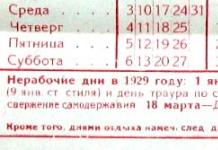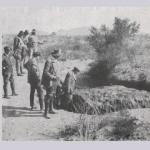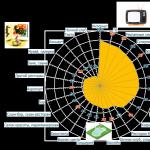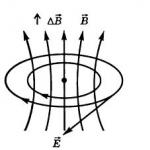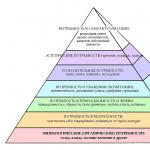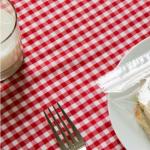For every mother, her baby’s heels and palms are the most valuable thing in the world. We always kiss them, we call them “sweeties,” and we really want them to stay so small and cute for a long time. But children grow, and so do their heels. To preserve the memory of these tiny arms and legs, you can take as many photographs of them as possible, you can make a plaster or clay cast.
And we want to offer the most creative, in our opinion, way. Let's create decorative pictures with prints of the child's hands and feet. We offer you 7 of the most original options, which can be hung both in the nursery and, for example, in the kitchen. By the way, pastel shades colors look most harmonious in such drawings.
An owl whose wings and ears are the imprint of a child's foot.

Butterfly wings made from children's footprints.

Rays of sunshine from footprints.

Flowers are the imprints of children's little feet.

Family tree made from the handprints of dad, mom and baby.

A good whale with fins made from footprints.

When we were children, our mothers traced our palms and feet so that the children’s album would contain a memory of what we were like. Already at school we traced them ourselves and gave them to each other.
Today you can make an imprint of a child's hand and foot with every fold on the skin. And your Romeo will be able to give his Juliet in kindergarten not just a picture, but a three-dimensional copy of his pen. In this day and age you won’t surprise anyone with photographs; they shoot videos mobile phone, and 3D casts of children’s hands and feet are truly exclusive, which cannot be bought, you can only order it from a master or make it yourself.
Godparents buy a gift certificate for this service so that the adult child remembers them with gratitude. Lovers (like on the “Walk of Stars”) and newlyweds order hand impressions on an engraved stand from craftsmen. For the hero of the day, you can call a specialist to your home and organize a gift - a procedure as part of the holiday program.
Nowadays it is fashionable to collect sculptural copies of the entire family and store them as family heirlooms for posterity. Many people order accurate sculptures of their hands in 3D format.
Of course, such casts were invented a long time ago, but this service was expensive, and not everyone dared to take their baby across the city to the sculptor’s workshop. Children grow up rapidly, and I want to leave an extraordinary gift in memory of my childhood. When your child becomes famous, these casts will be more valuable than gold. Now many masters provide this service, but it is quite possible to get by on our own at home
Children's casts. Method one - on the sand
Tools and materials

Step by step instructions
- Pour sand into a bowl (without compacting).
- Carefully make an impression of the child’s hand or foot in the center.
- We lay out the selected decor for prints along the edges.
- Dilute alabaster to the consistency of sour cream (better cold water, since it sets very quickly).
- In a thin stream, so as not to spoil the work, pour the solution onto the sand in a layer of 2 - 3 cm.
- After 15 minutes, when the alabaster has completely hardened, carefully remove it from the mold.
- >We clean the sand with a brush and cover it with paint, varnish, and apply a commemorative inscription.
The materials for casts of children's hands and feet are very diverse. Once you've gotten comfortable with sand, you can experiment with plasticine.
Method two - plasticine
Tools and materials
- children's soft plasticine;
- gypsum;
- PVA glue;
- material for decoration.
Step by step instructions

Method three - in the test
Tools and materials
- wheat flour – 1 cup;
- fine salt - half a glass;
- vegetable oil or glue – 1 tbsp;
- paints;
- material for decoration.
Step by step instructions

For grandparents, this is the most desired gift that they will keep for the rest of their lives.
But grandma’s fun and simple method has not been canceled - if there are hypoallergenic paints in the house, just give the child paper and paints - and you will have a lot of prints in five minutes.
If you have mastered simple methods using simple materials at hand, you can purchase a set for professionals.
Children grow very quickly, and you need to catch moments that will delight you for the rest of your life!
Surely all parents want to preserve warm, emotional memories of their children’s childhood. But, unfortunately, even the most detailed photographs cannot always convey, years later, that thrilling magical feeling that mom and dad experience while touching their child’s tiny fingers. In this case, hand-made casts of children's hands and feet come to the aid of sentimental parents.
Colorful footprints
The first thing that comes to mind to immortalize the hands and feet of a child is to dip them in watercolor or gouache and print them on plain paper or cardboard. Yes, it's not the best original way, but it is inexpensive and fast. To preserve this sheet for a long time, you can either laminate it or put it in a beautiful stretcher.
Plasticine legs
Another easy option for making casts of children’s hands and feet with your own hands is plasticine. The best choice is one that hardens itself in the air, or a special mixture for modeling. The mass should be flattened into a medallion and the baby’s hand or foot should be well imprinted in it. Be sure to make a hole before the plasticine dries so that the “home heirloom” can be hung on a ribbon.

Salt dough print
Many of us sculpted “salty” figures in childhood, and now, having become parents, salt dough will help us capture the tiny fingers of our babies. So, how to make casts of children's hands and feet from salt dough?
Dissolve half a glass of salt in a glass of water and add about a glass of flour (more is possible until the dough begins to stick to your hands). We divide the resulting mass into 4 equal parts and roll it out with a rolling pin into flat round pieces a couple of centimeters thick and the size of a child’s hand and foot. With the baby's dry, clean palms and feet, we press deeply onto each piece. If the cast is unclear or you don’t like it, you can roll the dough again and repeat the procedure.
When the cast is ready, let the dough dry for 2-3 weeks. After this, the dough can be painted with acrylic paints. As you can see, this method is quite painstaking, but the result will be durable and original casts of the child’s arms and legs made from salt dough.

Salt dough and plaster cast
Even more meticulous and unusual way get prints (casts) of children's hands and feet with your own hands - plaster them.
To do this, we make the dough according to the recipe described above, and form prints in the same way, and it is better to make 2 times more dough so that the print is as deep as possible (2-3 cm in depth). We take plaster (a creativity kit from special art stores for children is best, but a construction kit can also be used). We dilute it with water in the proportion of 1 cup of gypsum to half a glass of water (it is important to add water to the plaster, and not vice versa). Add 2-3 spoons of PVA glue to make the resulting cast stronger. Mix everything very quickly and pour it into the mold with the dough.
Before the mass hardens, it is better to wipe off all the unsightly edges with a cloth, otherwise you will have to file them off later, which could damage the shape. Let the cast of the child’s hand (foot) harden with your own hands for a day. Plaster usually dries quickly, but in order for everything to turn out well, it is better not to touch it for several hours. After which finished cast can be removed from the dough. We will sand down all the unevenness. sandpaper. You can decorate such prints acrylic paint or make an interesting collage of children's photographs with them. The main thing is to approach the process with imagination!

Sand casts
Another way to make your own impressions of children's hands and feet is to use sand instead of dough. The operating principle is the same. Pour sand into a deep container, moisten it with water so that it turns into a thick mass, but does not float in the water and the child’s print does not spread. We lower the baby’s leg or arm deeper (1-2 cm) so that an imprint remains, and take it out. Then we lower the plaster into the resulting mold (the proportions are described above) and leave it for several hours to harden. Then shake off the excess sand.
Casts from the finished set
Here were several ways to make casts of children's hands and feet with your own hands, but you can also use ready-made kits for creativity. They allow you to create high-quality “handles” and “legs” without using improvised tools; you just need to follow the instructions. There are 2D sets (only with prints), 3D (palm and foot in in full), as well as with the possibility of making a cast of the child’s hand along with with an adult hand, casts in a frame, on a stand, in an album, with an engraved plaque and much more. The only drawback of this method is the high cost, but those who really know a lot about original and memorabilia will appreciate it.

Instead of a conclusion
Creating memorable things, be it photographs or the first homemade handmade, is very important, since children grow very quickly, and we are not able to preserve every detail in our memory. In addition to such wonderful casts, mom’s chest with little treasures can be constantly replenished - with tags from the maternity hospital or photos from the first ultrasound, greeting cards from family and friends. Photo albums, a bag with the first strand of hair, the first clothes, the first toy, the first pacifier or the first bottle, and when the baby grows up, the first drawings, the first fakes and many other amazing memorabilia.
And the child will probably, as an adult, want to get acquainted again with the things that surrounded him in childhood, and perhaps even remember just a little bit about that wonderful carefree and happy time.
Hello! In the Oh My Baby Book you will find special pages for hand and foot prints.
We know that perhaps you have never done this before and so here you will find some tips on how to make a hand and foot print beautifully and neatly.
The footprint and handprint of a newborn are very touching memories. Believe me, legs and arms grow very quickly and the main thing is not to miss this moment and leave an imprint in the book.
Let's start from the very simple way for a print, trace the handle or leg with a pen or pencil. Everything here is extremely simple and success is guaranteed!
Turn out cute, beautiful and fast!
But we are not looking for easy ways. So, if you decide to make a real print, then below we offer some instructions and tips. First you need to prepare! What you will need:
A sheet of paper, preferably thick or matte cardboard high quality, but not very dense. You can use designer paper, which can be purchased at any scrap booking store.
You only need paper if you want to make an imprint on a separate sheet, then cut it out and paste it into the book. You can skip this step and make an imprint directly in the book on specially designated pages for the imprint of a hand and foot.
Advice: If you want to make an imprint directly on a page in a book, then it is advisable to practice at least once. If suddenly you missed or something went wrong, don’t be discouraged. Make a print on a separate sheet of paper, cut it out and paste it on top of the failed print! 🙂
Paint or ink:
Option 1 - ink. A stamp pad with single-color ink, which can also be purchased at a scrapbooking store. The ink must be non-toxic and free of acids - this is important! Be sure to check this point with the seller. Ink allows you to create clearer and more durable prints.
Option 2 - finger paints. Can be bought at any children's store. They are absolutely safe for children.
Wipes: wet baby wipes and cotton towel.
Well, let's get started!
- Of course, you can make a print yourself, but it’s better if you have an assistant.
- Think about the time - the most best time, this is when the child is in good mood and doesn't want to eat.
- Wash the hand/foot thoroughly with regular baby soap, which you always use for bathing, and then dry it with a dry towel so that it is spotlessly dry.
- Open the book to the correct page or prepare separate sheet paper/cardboard.
- Hand the child over to dad or another assistant (position: back to dad, one hand under the arms, the other hand under the butt holding the leg).
- Apply paints or ink to your foot or palm (evenly).
- Making an imprint: for the leg, start from the heel and smoothly move to the toes, and place the entire palm directly on the sheet.
- We wipe the arm and leg with wet wipes or go straight to the bathroom and wash everything under the tap.
- That's it - the print is ready! Now we need to let it dry!


You will succeed, it's simple!
Currently, many parents make casts of children's hands and feet with their own hands. This commemorative print looks very nice and will allow for many years remember the wonderful moments of early childhood.
DIY casts of children's hands and feet
To make casts of arms and legs with your own hands, you don’t need experience, you just need to carefully read the instructions. As a rule, sets contain everything necessary materials and tools. In addition, they often provide the opportunity to make several casts, because working with a child is completely unpredictable, and whether the perfect contour will turn out depends largely on our small models.
How to prepare for making a three-dimensional cast of arms and legs with your own hands:
- take care of the little model’s good mood;
- you can use sleep time;
- Residue from the mixture after making may be difficult to wash off, so wear clothes that you don’t mind getting dirty;
- the participation of two adults is necessary - one to take care of mixing the ingredients, the second to hold the baby and distract him;
- if you have touched the sides or bottom of the mold, you can pour plaster into it and then smooth out any imperfections with sandpaper;
- the time it takes for the mold to completely harden depends on the temperature of the water used - than colder water, the longer it will harden; the warmer the water, the faster the material will harden; room temperature of the water is optimal;
- Make sure the containers are the right size for your baby's feet or hands.
How to prepare a child to make a cast of children's hands and feet with your own hands
How to prepare molds for casting casts for children with your own hands
To make an impression with your own hands, mix the mold powder with water in any container and pour into a closed container. plastic container, you can mix the mixture directly in the same container. Measure ingredients accurately as poor ratios can affect the final result. You can use a test sample, which is sometimes included with the kit, to have information about the curing process.
Wet the skin of children's feet or hands thoroughly so that they slide out of the hardened mold easily.
Thanks to this manipulation, your child will be able to get used to the temperature of the mass, in addition, we will minimize the risk of air bubbles that deteriorate the quality of the product. Guide your baby's hand so that it slides accurately and accurately into the prepared paste.
Don't worry if your baby moves his arm. The beginning of the hardening process will show a change in the color of the paste, and this is the point at which the child should not perform very sudden movements. After hardening (about 1-1.5 minutes), remove the handle. To avoid holes in the set mold, guide your child's hand without touching the bottom or sides of the container.
How to prepare and pour plaster
Pouring plaster should not last longer than 5-6 minutes.
- Prepare a plastic bowl and measure required quantity water and gypsum in appropriate proportions. Always add powder to water, not the other way around;
- Pour the plaster of Paris into the water slowly, stirring constantly, until the mixture reaches the consistency of very thin yogurt. Mixing too intensively and for a long time can lead to the mass beginning to harden already during pouring into the mold. Also, stirring too much can cause bubbles to form. If you see bubbles on the surface, tap the container a few times to release them;
- Initially the plaster is very watery, but after a while it gently begins to thicken. The plaster is ready when it reaches the consistency of pancake batter. Then, pour a small amount of plaster into the mold and carefully move the container in different directions so that the mass fills exactly every hole;
- After filling the form 1/3, tap the container on the table surface;
- Pour in the rest of the mixture in batches;
- Leave the container to harden for several hours.
How to avoid air bubbles in plaster?
Air bubbles spoil volumetric impressions, as a result, the plaster does not reach the fingertips, and the impression will not completely replicate the child’s hand. This problem mainly occurs with hand impressions, since the fingers on them are longer than on the feet, and the plaster does not always flow well into these holes.
You can use the following methods to avoid this:
In what position is it most convenient to make 3D impressions?
0-5 months. For very young children, the procedure should be carried out in a supine position, as for feeding.
5-12 months. Place the baby sideways on one knee with the parent, legs should hang freely. Make an “airplane”: the parent holds the baby on his stomach with his hands, the arms hang freely. In a sitting position: the parent sits the child on his lap, facing the table.
After hardening, carefully sand the product with sandpaper. After painting with paint, this treatment will become invisible.
How to make casts of arms and legs with your own hands
The resulting casts can be prepared in different ways:
You can add to the composition photographs of the baby at the age when the print was made, and also come up with a background with a thematic plot - for example, a footprint on sea sand.
The resulting souvenir will delight you, and you will be able to enjoy this memorable and a beautiful thing for many years.
